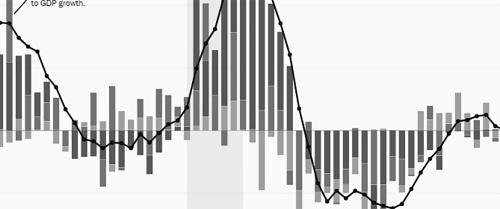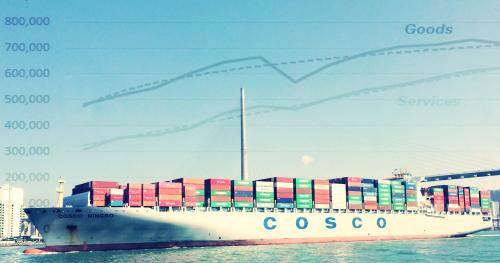Two weeks ago, the Trump administration announced new tariffs on U.S. aluminum and steel imports. As we described in a recent blog post, these tariffs not only have the potential to increase the price of aluminum and steel, commodities on which many firms, industries, and local economies rely, but also to expose additional industries and states should trade partners retaliate with their own tariffs on particular U.S. export products.
On Friday, the European Commission did just this, releasing a list of products imported from the United States to be targeted by retaliatory tariffs if the European Union (EU) does not receive an exemption from Trump’s steel and aluminum tariffs.
That exemption remains an uncertainty. EU Trade Commissioner Cecilia Malmström and U.S. Secretary of Commerce Wilbur Ross will meet this week in Washington, D.C., as part of a 30-day negotiation window to avoid a trade war. But Malmström warned on March 14 “that if the EU is not to be excluded from the measures then there would have to be a firm and resolute, but proportionate, response.”
The EU’s product list includes aluminum and steel, but also encompasses consumer goods from a wider range of U.S. industries, including whiskies, denim trousers, cranberries, and motorcycles. In a first phase, custom duties could be applied immediately on some products if no agreement is found in the 30-day window. In line with the timing of World Trade Organization (WTO) regulation, the EU plans a second phase of custom duties if the Trump tariffs are ruled to be illegal by the WTO or if three years pass.

In sum, the products on the EU list accounted for $8.2 billion worth of U.S. exports to the EU in 2017, or 3 percent of the total ($283 billion). As we have documented before, U.S. states vary in their exposure to trade policy shifts based on their core export industries and top destination markets. New York, for instance, exports $1.5 billion worth of goods under the Commission’s scrutiny, including $1 billion of jewelry and other precious metals. The states of leading congressional Republicans would also face these custom duties. California, the home of House Majority Leader Kevin McCarthy, is the third most exposed state in volume, exporting $700 million worth of goods included in the list to the EU. The tariffs would also affect exports of electrical machinery from Texas, the state of Senate Majority Whip John Cornyn, as it exported to the EU for $143 million.
Beyond volume, some states’ exports to the EU covered on this list account for a relatively high share of overall EU-bound exports. The figure below ranks states based on this metric.

The share of targeted products in the total exports of Hawaii, Michigan, Missouri, and Maine is more than three times the U.S. average. Michigan is particularly exposed, with the second largest share of its exports in the scope of the EU commission, as well as the second highest volume of goods, including $674 million worth of rear-view mirrors for vehicles. House Speaker Paul Ryan’s state of Wisconsin is the seventh most exposed in share and the ninth in volume because of its exports of odoriferous substances and cranberries.
Whiskey’s inclusion implicates EU-bound exports from Tennessee ($466 million) and Kentucky ($180 million) in that product category. Pennsylvania accounts for 40 percent of U.S. exports of large motorcycles to the EU. These new tariffs could weaken the recent consolidation of Harley Davidson production from Kansas City, Mo. to York, Pa., as 450 new positions have just been announced at the York facility.
The application of the EU retaliatory tariffs depends on the ongoing negotiations to exempt the EU. And besides the EU, other key trade partners have announced their intention to retaliate, including China and Brazil. In total, the threat of these potential costs for U.S. local economies reveals how shortsighted and counterproductive the Trump tariffs are.
Details on volume and share of U.S. states exports targeted by EU’s potential retaliatory tariffs are available in this appendix.
Methodological note: The EU list details products at the Harmonized System 8-digit level (totaling 348 products), whereas the available data from the U.S Census Bureau details exports at the Harmonized System 6-digit level (which shortens the list to 147 broader product categories).
The Brookings Institution is committed to quality, independence, and impact.
We are supported by a diverse array of funders. In line with our values and policies, each Brookings publication represents the sole views of its author(s).








Commentary
Which U.S. states are most exposed to the EU’s retaliatory tariff proposal?
March 19, 2018